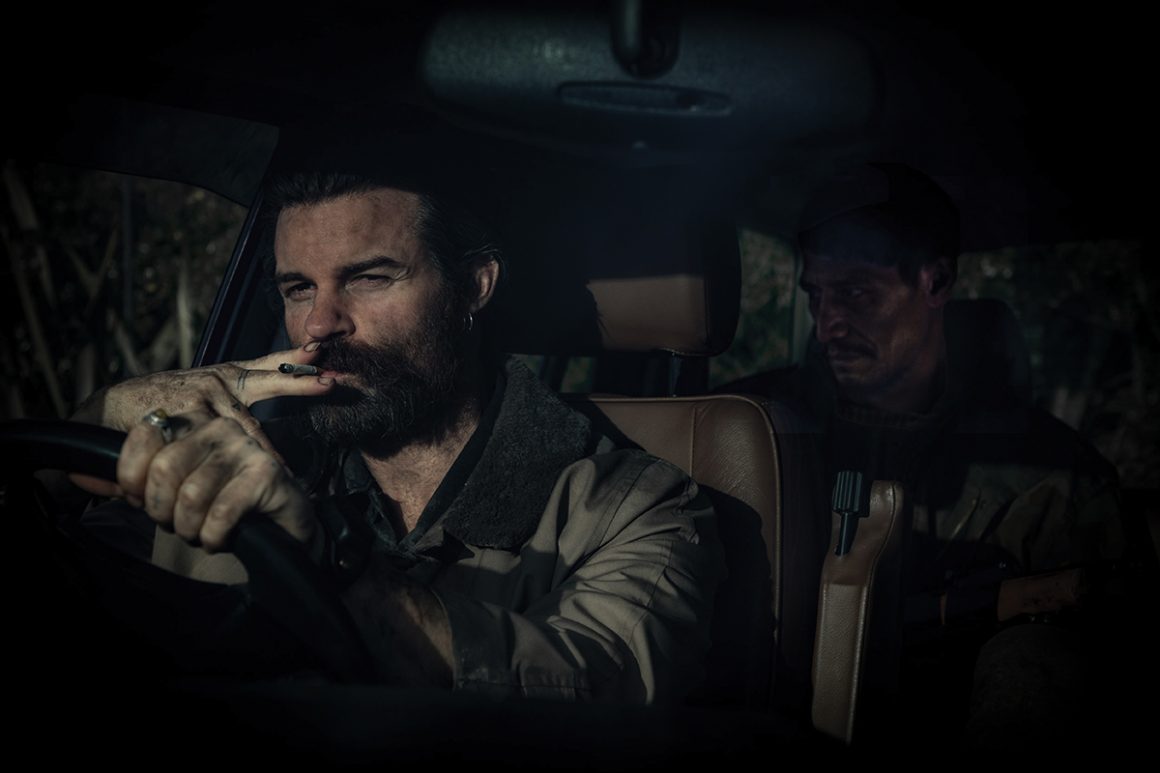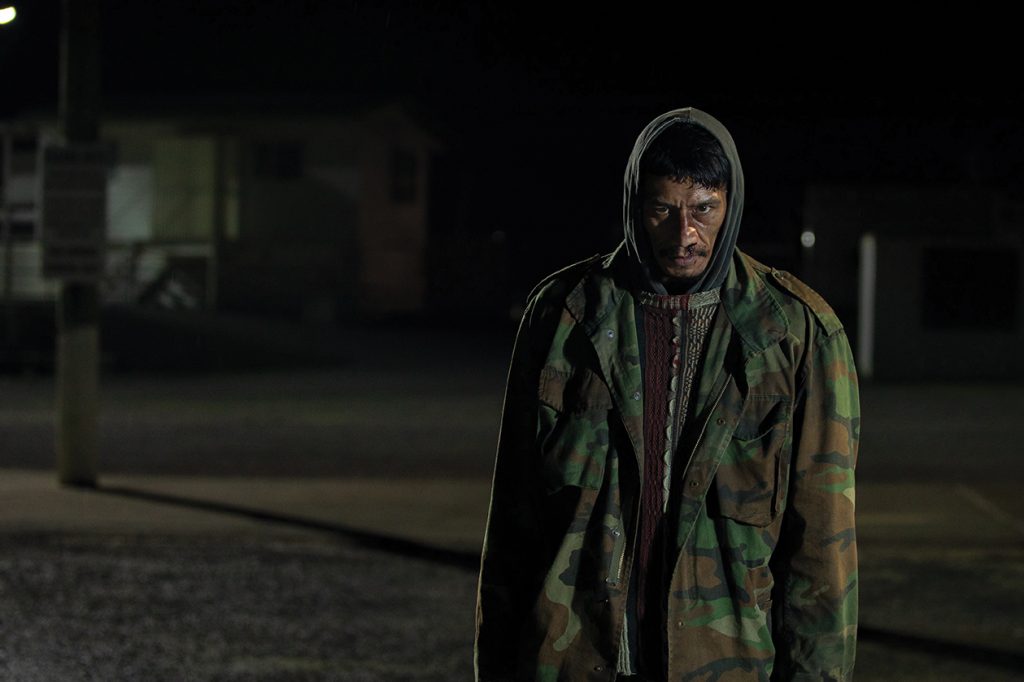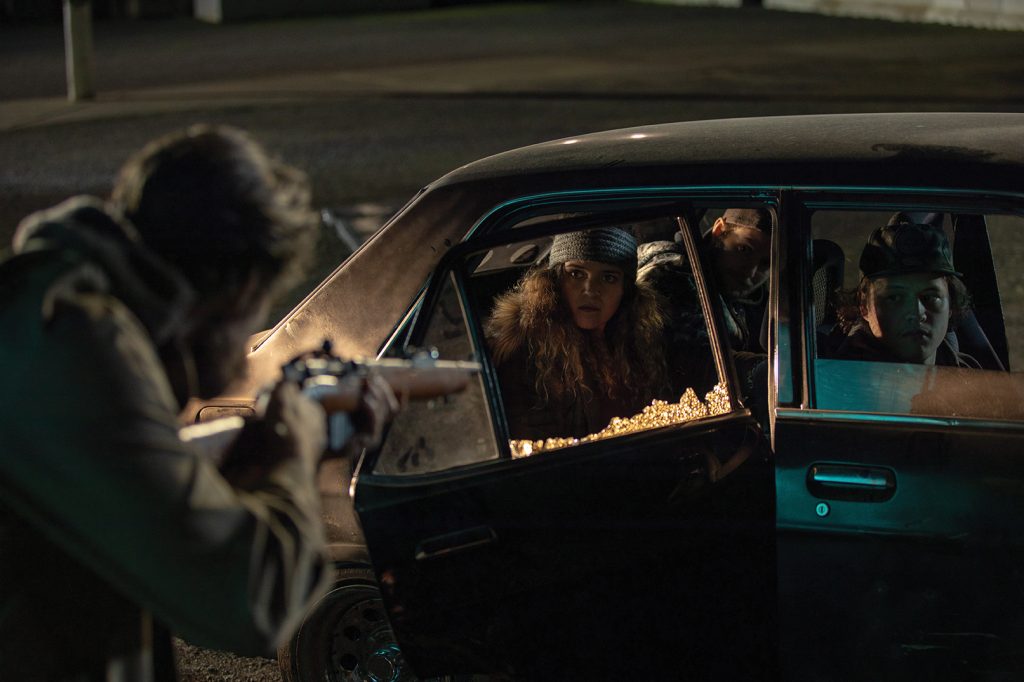
CUFF 2021 Reviews: Coming Home in the Dark
By Ava Zardynezhad, April 30, 2021—
From the moment I was introduced to it, James Ashcroft’s Coming Home in the Dark was an enigma. The motivator to watch it had come from CUFF Lead Programmer, Cameron MacGowen, who held the film in high regard and fully expected a big name streaming service to acquire its streaming rights. The teaser and the film descriptions barely gave anything away. All I knew going into it was that Daniel Gillies — yes, Elijah from the Vampire Diaries, Daniel Gillies — was to play a psychopathic villain by the name of Mandrake and that the film revolves around a teacher and his family who fall “into a nightmare when they find themselves captured,” by said psychopath. With all the information I was given, I knew to expect a thriller set in New Zealand, featuring an actor I hadn’t thought about since my awkward tween days and that it was all supposed to be incredibly chilling — nothing beyond that.
Having watched it, one thing’s certain — chilling doesn’t do it justice.
Coming Home in the Dark was an official selection at the 2021 Sundance film festival. The film was shot over 19 days. The script — at least the first 20 minutes of it — was adapted by Ashcroft and Eli Kent from a short story of the same name by New Zealand author Owen Marshal. However, the rest of the film is inspired by Ashcroft’s research into the darker parts of the history of schooling in New Zealand.
I’ll try not to spoil too many major plot points, because in my opinion, going into it cold makes the experience even more impactful.

The film begins as we follow Alan Hoaganraad (Erik Thomson), his wife, Jill (Miriama McDowell) and their two sons Maikah and Jordan (Billy and Frankie Paratene) on a car ride through the great outdoors, somewhere in the Greater Wellington Region. The eerie landscape of the hills, Ashcroft’s manipulation of light and shadows, an abandoned Mercedes on the side of the road and the distressing sound of its door sensor alarm, as well as the many emergency vehicles along the road make it hard to miss that this trip will not be just a typical family picnic. In the hills, the family runs into a mischievous duo made up of Mandrake (Daniel Gillies) and his silent companion, Tubs (Matthias Luafutu). At first, it seems like the two are bandits after the family’s material possessions. But soon, we realize there’s more to it than meets the eye. Once Jordan calls Hoaganraad by his nickname “Hoaggie” — in search for reassurance — we start to worry that robbery is not the only crime the family is going to fall victim to. The nickname seems to spark something in Mandrake and just as it was starting to seem the family might survive this encounter, 20 minutes into the film, we fully accept what to expect from there on.
The rest of the film mostly takes place in the family’s car. As Ashcroft put it, the car acts as “the pressure cooker that really [drives] the tension and [drives] the characters to confrontation and collision.” It is in the car that we start to recognize the relevance of Hoaganraad’s occupation and nickname. Throughout their drive, Mandrake keeps questioning Hoaganraad about his past teaching jobs until we start to realize their connection and suspect that the encounter in the hills might not have been a mere coincidence.
The mystery that existed around Coming Home in the Dark in its promotion is very much reflected and sustained throughout the film. By the end of the film, various questions remain unanswered about the characters and their motivations. Critics such as Brian Tallerico credit this to Ashcroft’s inability to “land the more serious themes about past sins and vengeance, unsure of what he’s saying about either.” I don’t quite agree. Intentional or not, I think the ambiguity effectively leaves room for interpretation. It’s one of the things I appreciated about the film. Trauma is a great motivator in Coming Home in the Dark, to the point that it blurs the line between victim and perpetrator. Now, certain boundaries remain clear, but I think the ambiguity does effectively create grounds for discussing larger issues at hand. The film forces you to question your ideas of morality and to think about the power dynamics that exist in our society. Interestingly, it also hits closer to home than one might expect. The film encourages empathy and deep understanding of people. I think it is necessary for films such as Coming Home in the Dark to have that ambiguity and not to necessarily build up to a conclusion. The themes and ideas discussed in this film are complex and by leaving things open to interpretation, what Ashcroft is doing is respecting his audience’s intelligence by allowing them to decide what’s right and what’s wrong.

The discussion of thematic choices aside, artistic decisions also contributed to the success of this film and its effectively-chilling suspense. A lot of questions about the survival of the characters are answered pretty early on and as the film progresses, survival becomes more and more insignificant. However, Ashcroft manages to build tension and suspense throughout, until the final release. The acting is solid. Gillies’ portrayal of Mandrake is very well done. My personal praise goes out to Luafutu and his portrayal of Tubs. Though silent most of the time, his quiet twitch of a muscle expresses more emotion than most can over endless lines of dialogue.
Artistically, the way Coming Home in the Dark is shot and edited really helps drive the tension and uneasiness that the film depends on. Cinematographer Matt Henley and Editor Annie Collins — who has worked on Peter Jackson’s Lord of the Rings movies — are also to be thanked for the look and the feel of the film.
For a film that takes place over the course of the night, the use — or more appropriately, the manipulation — of light is so purposeful and adds so much to its tension, suspense and uneasiness. The locations where the film was shot also added to the overall mood of the film, where “you can be vulnerable and alone in the widest, brightest, most beautiful spaces,” said Ashcroft. Additionally, the length of the shots added to the dreadful eeriness throughout.
“Generally, you’re wanting to cut away [from the shot] because something’s uncomfortable,” Ashcroft explained. So he made sure not to cut away and not be “afraid to linger.”
If you’re a fan of the horror genre or if you like thrillers, you would likely enjoy this film. If you like contemplating ethics and morality, human nature, or themes of power, vengeance, responsibility and justice, this film is for you. On a similar note, if you’re a fan of authors such as Flannery O’Connor, you might find this film familiar and intriguing.
For me, Coming Home in the Dark was a great film to kick off the 2021 Calgary Underground Film Festival.
